“….the act of performing at once solidifies and de-solidifies a performer’s body. The actor materializes a role on her/his body and substitutes her/his body for the characters; the already given, too-solid flesh melts and the fictional personage crystallizes. The actor’s emotional and physical energy becomes another person’s apparatus. Her/his body becomes equipment on which to fit out another set of properties. As spectators, we agree to take the actors body as a stand-in or a surface or, to use another metaphorical configuration, a passage-way for the body of the character…”
– Anuradha Kapur, Actors Prepare, Body City
The above lines describe the process of transformation of an actor into the character that is needed to be, to fulfil the responsibilities of having been in the position to enact and communicate best the character entrusted upon them to their respective audiences. The actor becomes the connecting line or a carrier of emotions, ideas, image of the character through their acting, in the best possible way. But what if this act gets frozen in a time and the actor nearly erases the image of the self and becomes the character what for the sheer passion over the character. Or, using their body as a site, repeatedly, to evoke memories of past, re-interpret ideas and ideologies, together with assigning a whole new meaning and position to the identity of the ‘self’.
Bagadehalli Basavaraju, a teacher by profession and the believer in Gandhian ideas has since more than a decade, been performing as the living statue of Gandhi. What is interesting here is that he characterizes himself not just as Gandhi but ‘imitates’ the statue of Gandhi by smearing himself with silver paint and adorning with accessories. He started his performance as a mode to ‘replace’ words and spread Gandhian ideas not through any speech but by using the power of the visual imagery to make an impact.



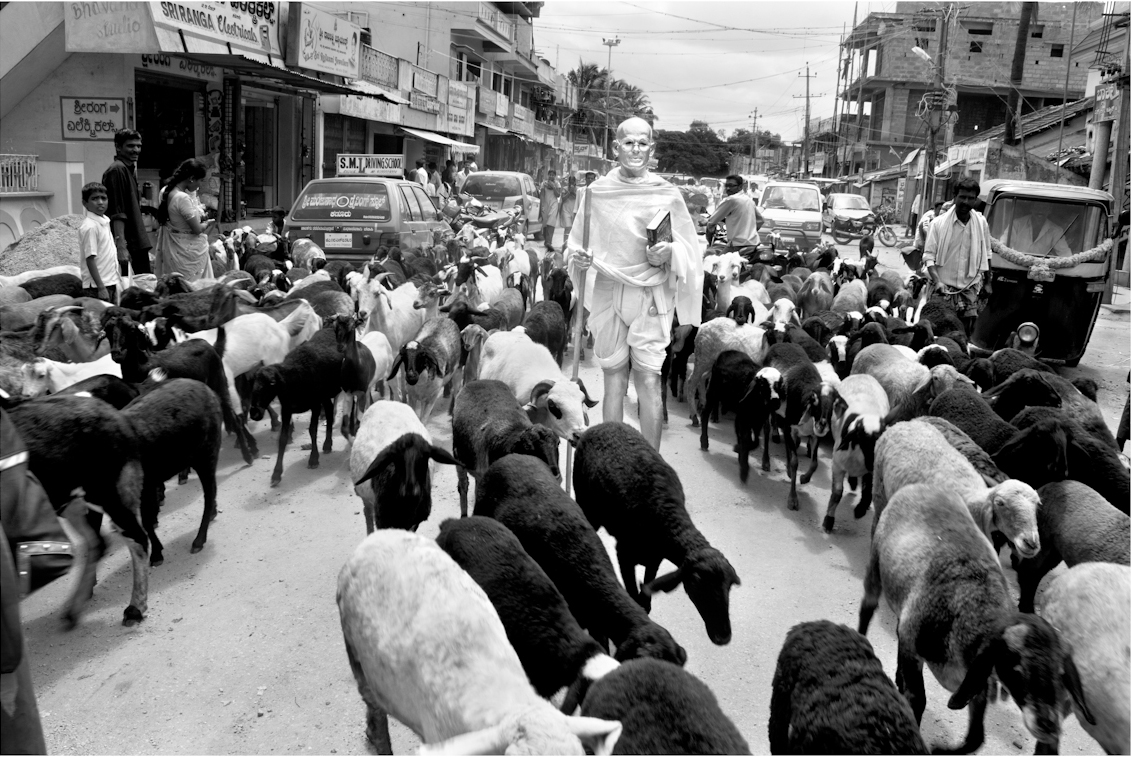
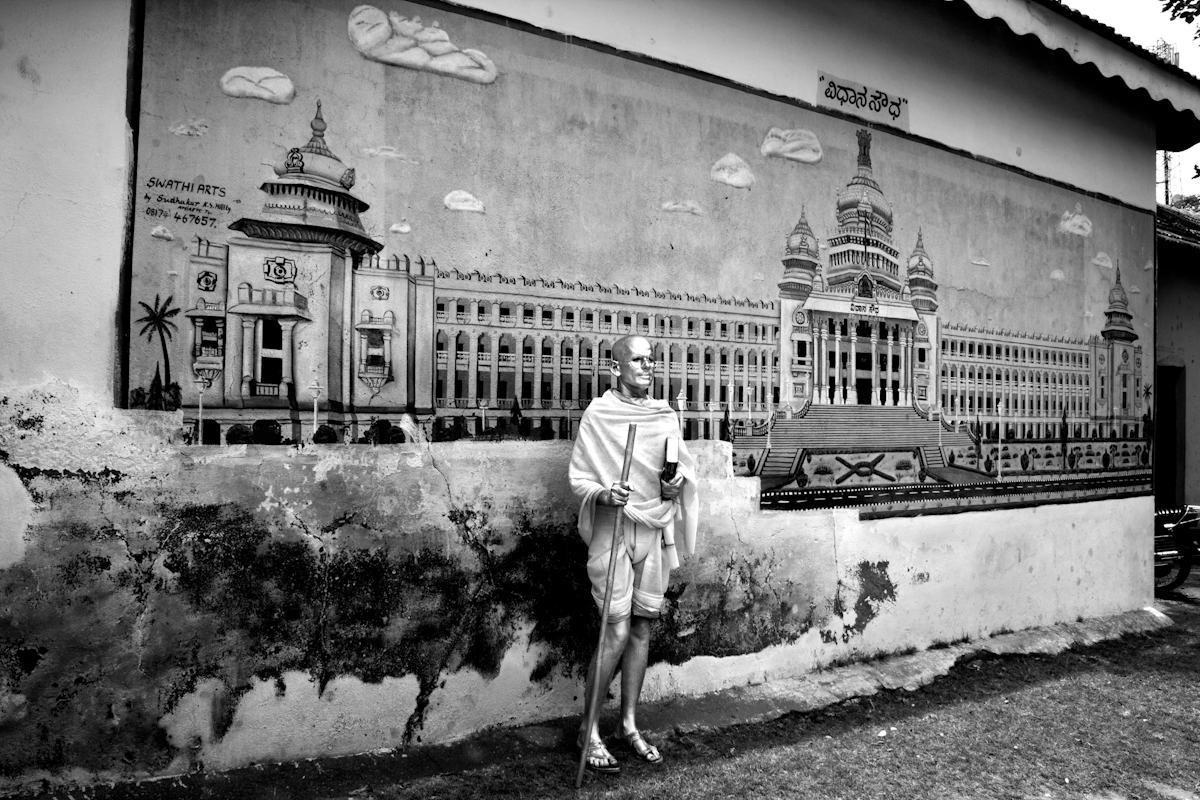
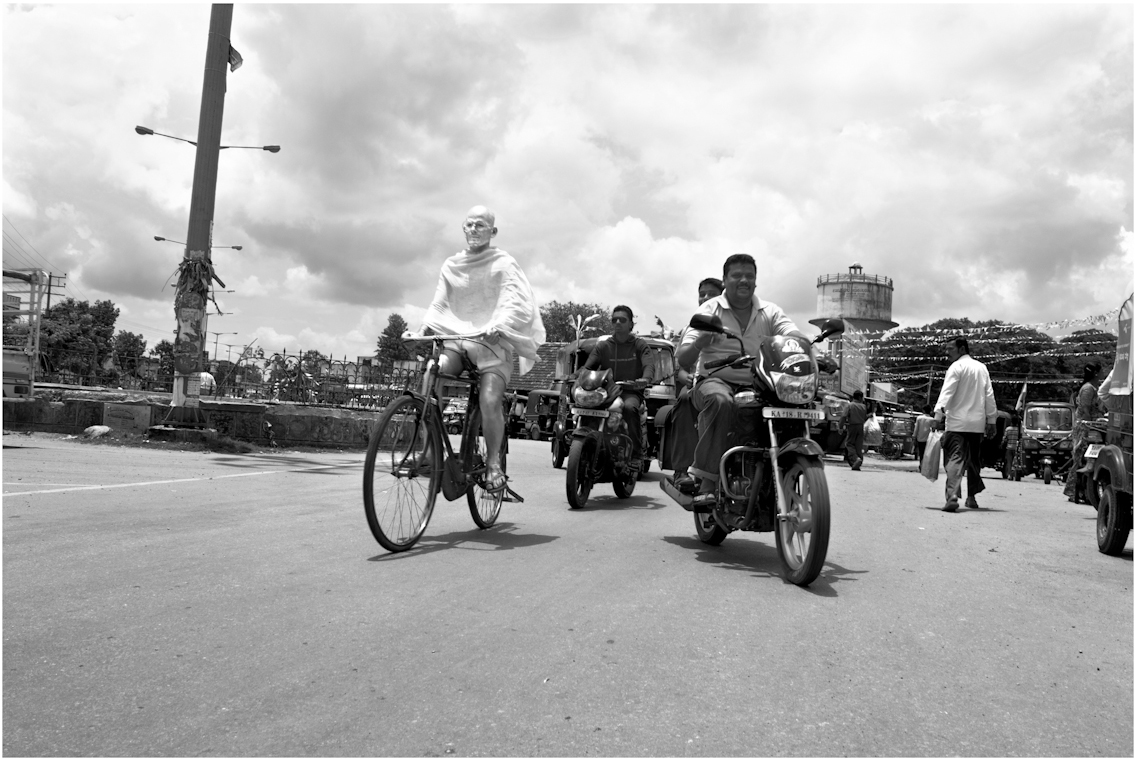
On another side is Vidyasagar, who dwells in the neighbourhood of Shanthi Nagar and is a common ‘sight’ to many. More than being recognised by his real self, he is often known through the image of MGR that he carries. Vidyasagar has ‘removed’ the gap between himself and his fondness for the favourite personality M G Ramachandran and has since years have got into this very image he admired and adored. His fascination has been towards the image of the popular film star and his own impulse to see himself as his favourite star.

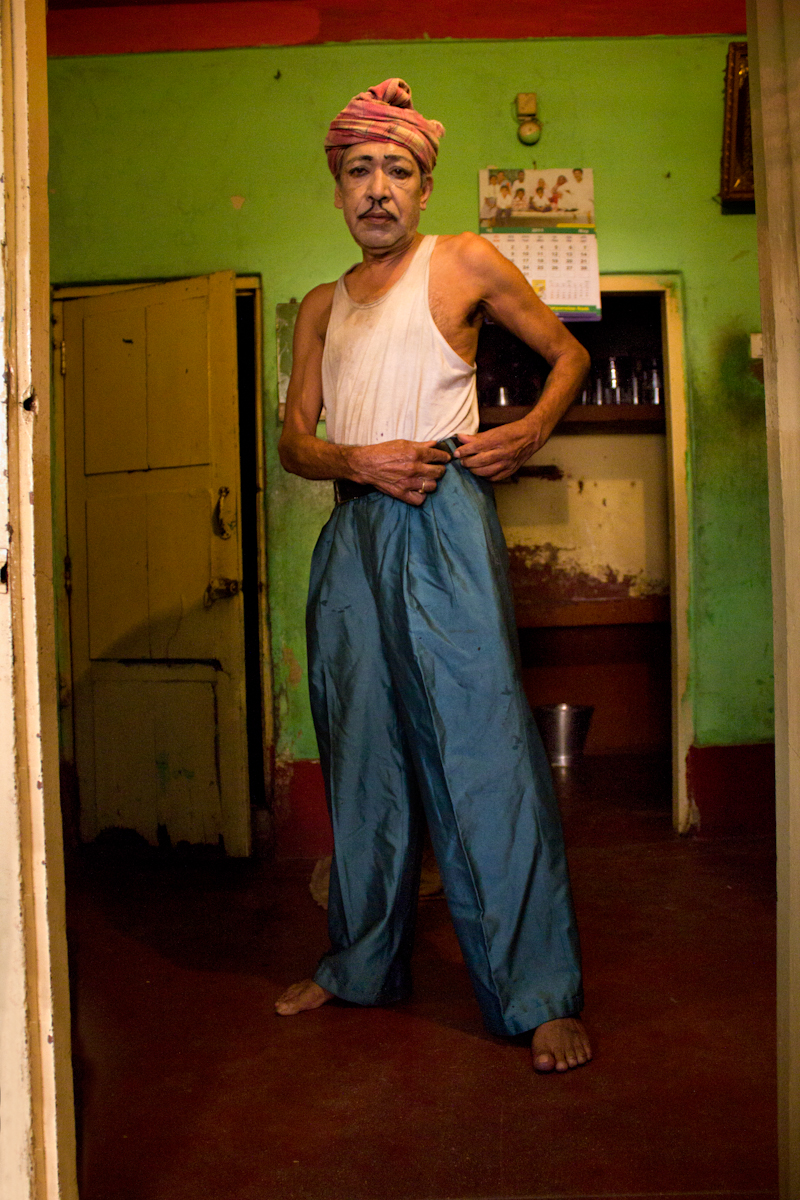
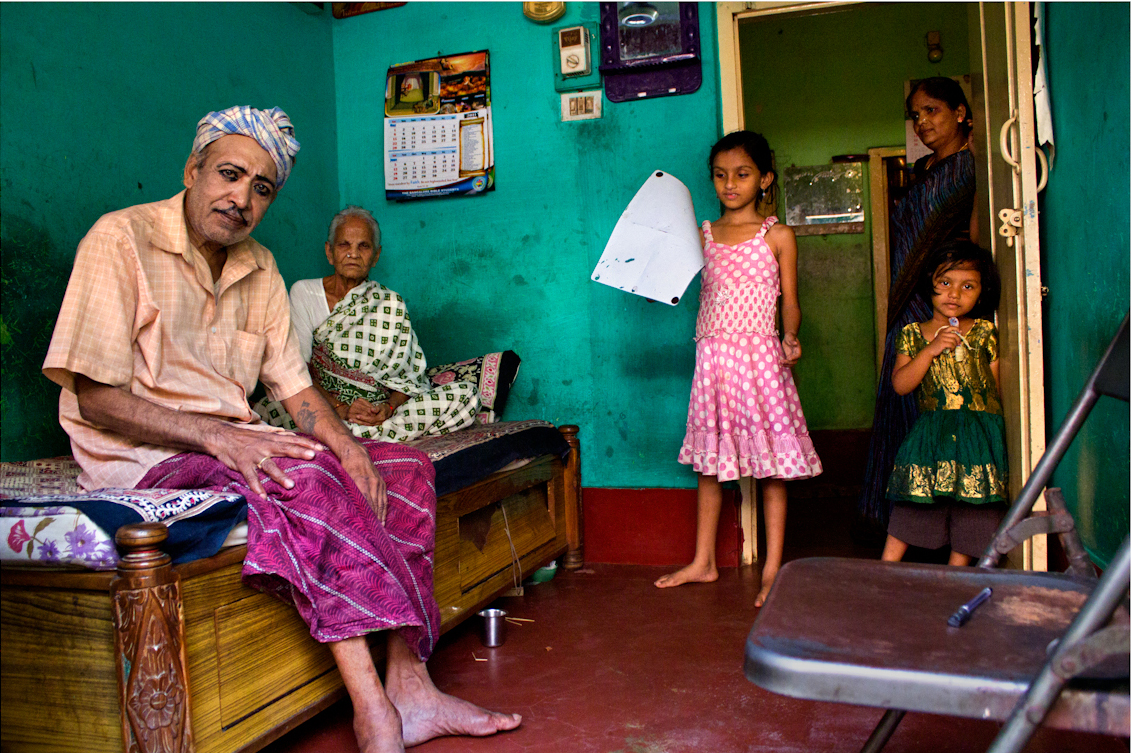
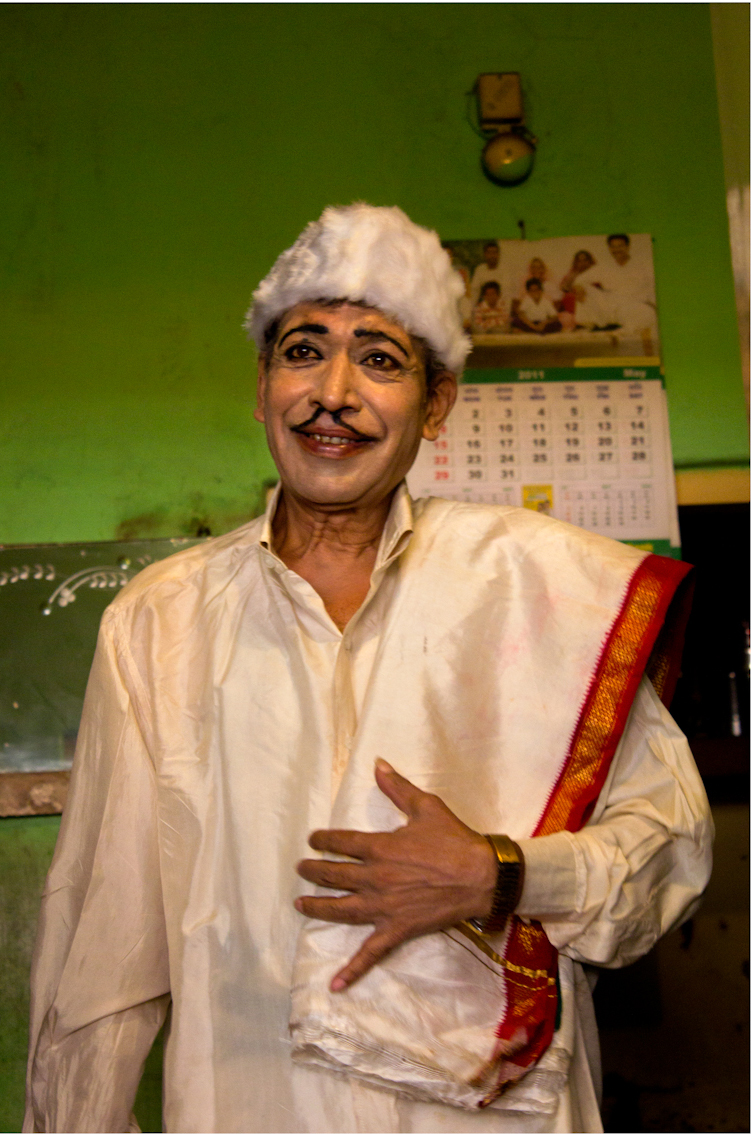
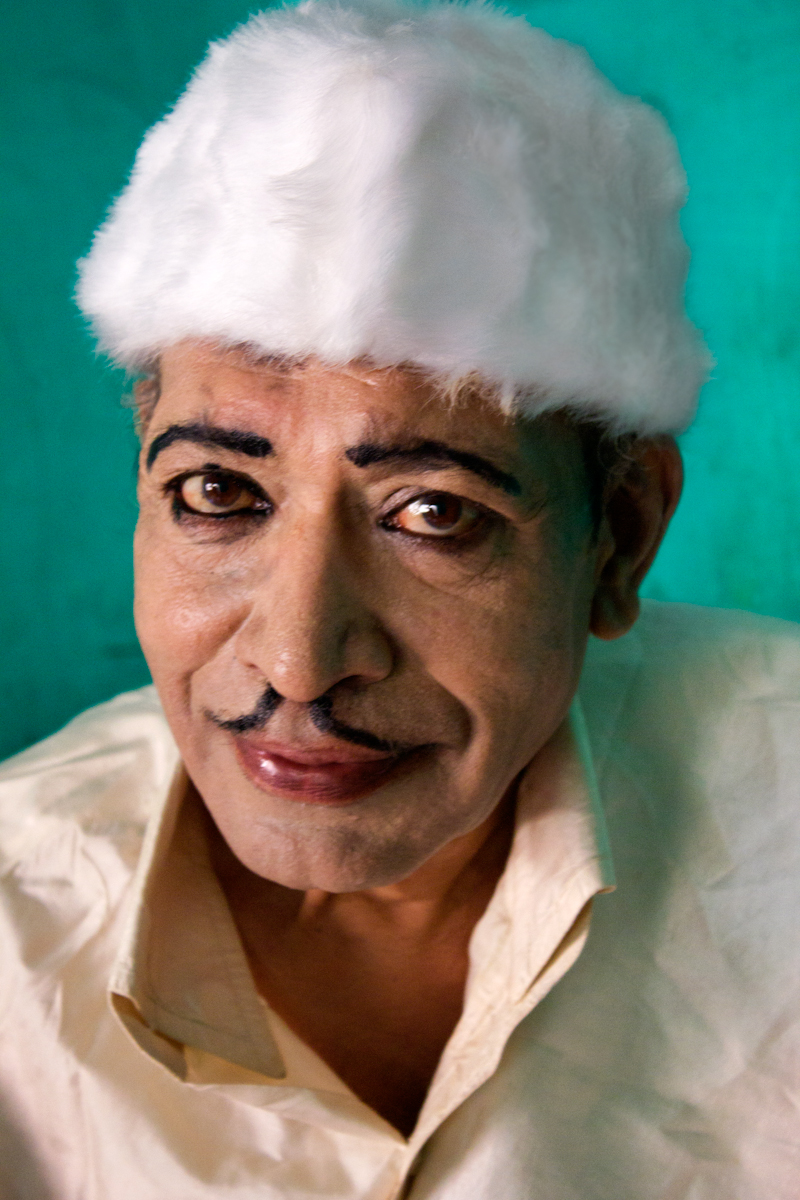
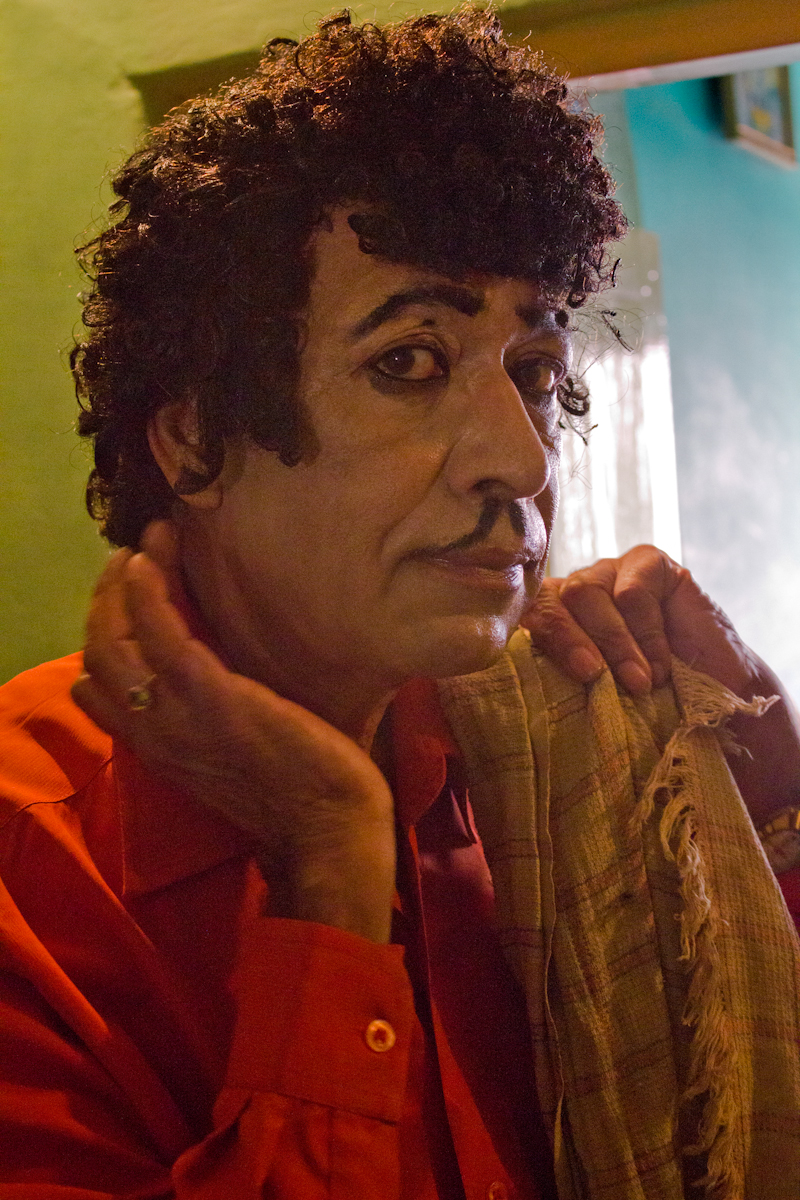
The common element that connects these two people is the very act of transforming themselves into the image suit of popular icons. While one performance (as Gandhi) is temporary and repeats on several occasions, the act of Vidyasagar (as MGR) has no special status of a ‘performance’ but in turn has become an everyday affair of transforming himself into the image of the other. In both these instances, it is fascinating to observe that as equal as the final image, each of the make –over session has the possibilities of transforming into a pondering moment; which in turn apparently has the ability to equal the final image of them being transformed ‘only visually’ into the image they aspire to be. Thus, their own body becomes a canvas for them, where each time they begin to dress up, requires the need to achieve the final image. What makes the two acts disparate is that Basavaraju’s performance is completely bound within the limits of time and space and a choice to appear under certain circumstances. But Vidyasagar frees himself from the limitations of these boundaries and forever lives in his surreal world.
The act of masquerading is indeed a highly paradoxical process, in which however strong the performer is pointing towards the popular other, there is also a simultaneous strong position that they are creating for their own self as the carriers of the image. The peril nature of such performances is also that in the process of creating a new alternate identity, the actors own true identity is at stake in the process of appreciating and appropriating the other image/identity. In turn, what happens is that, this process of breaking one image and making a new image itself becomes an identity by itself emerging as a collective sum out of this whole operation. In the sense, the performer new identity status is identified as a person who performs of a role alongside with being identified as an individual or the character into which she/he is impersonates into.
Bio:
I am Shivaraju BS, alias Cop Shiva, a farmer who became a Police Constable. I work with the Commissioner’s office in a desk position, answering calls and attending to emergencies. My job does not allow me to express myself and I believe photography is a tool to see and represent the world around me. The camera for me is an extension of myself, in search of truth, justice and equal opportunity to all.
I took to photography after working part-time with an artist residency called 1.Shanthiroad in Bangalore as a coordinator. I am passionate about recording people and places that touch my life. I wish to capture the diversity of humans who live on the edge and represent the spirit of our times.
